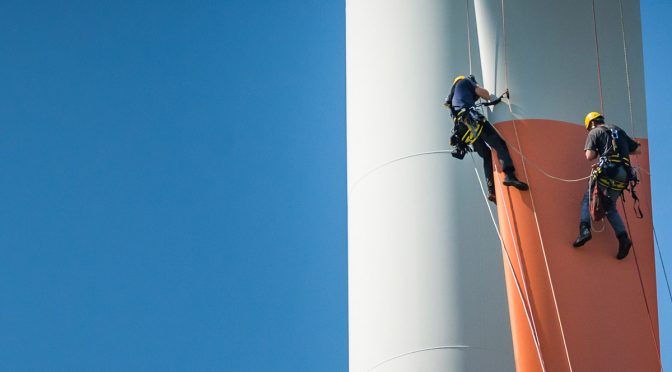essful implementation do we need to urgently address? Lorenzo Palombi explains.
Wind turbines have become part of our modern landscape. In 2020, Europe installed 14.7 GW of new wind capacity and this success continued in 2021, with offshore installment in particular set to have reached record levels. Lorenzo Palombi
And there’s no slowing down. It is expected that in the time between 2021 and 2025, Europe will install 105 GW of new wind capacity, provided governments deliver on the targets they’ve set.
With these bold commitments to net zero targets and Europe set to increase its project pipeline for on- and offshore wind in order to meet them, where do the opportunities lie for wind developers, policymakers and local communities?
And what barriers to successful implementation do we need to urgently address in the year ahead?
Maturation of the market
The European wind market has developed significantly over the past 25 years.
Continued technological enhancements as well as improved capacity factors, have driven down costs, helping wind power to solidify its position as a key driver of the clean energy transition.
Historically, mechanisms like feed-in tariffs, designed to stimulate investment in renewable energy, have played an important role in helping to drive the wind sector forward.
However, as the market has matured over the years, with increased competition and falling prices, subsidies have reduced, and we are now at a stage where wind generated electricity can be provided on grid parity level.
It is not only a steady fall in costs that has helped wind energy become increasingly mainstream, rapid technological innovation has also boosted the sector.
Advancements in manufacturing design, like bigger blade size and taller turbines, have bolstered production capacity.
Digitisation is meanwhile increasing the ability to streamline operations, integrate farms into the physical landscape and optimise energy production. AI technology is even assisting with wind farm maintenance and helping to reduce the chance of plant failure.
We now have wind energy technologies to drastically lower greenhouse gas emissions at our disposal and at competitive cost, but we must move significantly faster when it comes to implementation.
Recognising the potential of offshore wind
To hit net zero by 2050, governments and institutions must globally install wind power at three times the current rate over the next decade—creating 180 GW of new wind energy every year.
Urgent expansions in onshore and offshore wind are necessary to help achieve these targets. Onshore wind’s potential is proven, making up 80% of the new wind installations in 2020.
But now, to accelerate the sector at the pace needed, more and more emphasis is being placed on offshore wind development. Floating offshore wind in particular will stimulate growth and prove a more viable option for regions that need to consider deeper water installations.
With European companies representing an impressive 90% of the offshore global market, the region is well positioned to lead the way in the development of the sector.
Indeed offshore wind has the largest growth potential of any renewable energy technology, but a number of factors, including the policy environment, need to improve rapidly for the technology to reach this potential.
Tackling regulatory and infrastructure barriers
Too often, complex and onerous tender rules slow down the development process of offshore wind projects. A clear regulatory framework that facilitates the development, implementation and operation of commercial offshore wind projects is a key condition for more widespread adoption.
A free market framework where developers directly explore potential sites, then independently apply for and are granted a permit, is the most effective way to enable the acceleration of the industry at the pace needed to reach net zero.

Alongside addressing regulatory challenges, we must relieve grid capacity pressure, which is currently one of the biggest bottlenecks to the widespread implementation of offshore wind.
A more holistic approach is needed which allows the developer to factor grid planning into the development process of an offshore wind project from the start.
Overcoming these barriers will help to scale the market to allow for the standardisation of the technology needed, especially with respect to floating structures and turbines.
This will ultimately lead to the competitive levelised cost of electricity (LCOE), which is essential to drive widespread adoption.
Achieving greater adoption
Rapid acceleration of wind is essential if we are to reach climate goals and strengthen global independence from fossil fuels. It will also help to hedge against high electricity pricing we’re currently experiencing.
However, too many challenges to the concrete implementation of this technology remain. The issue we face is that the climate targets outlined at a national and international level do not sufficiently take into account the changes required at a local level. Meanwhile, innovation is outpacing regional policy.
In order to address these challenges and implement wind technology at the speed required, it’s vital we continue to educate and engage key stakeholders, from politicians, institutions and administrations to local residents, so that they understand the huge opportunities a switch to renewables represents.
Communities must be engaged every step of the way in the development of a wind project. Partnering with local businesses, enabling economic participation or offering community funds from the profits of projects are all ways to highlight commitment to benefiting the local residents.
With the expansion of the wind energy industry set to create 3.3 million jobs in the next five years, the socio-economic advantages of the development of the market, alongside the clear sustainability benefits, cannot be overstated.
Despite these challenges, it is certain that wind power is an essential part of the sustainable future the planet and its people urgently need.
Great opportunity lies ahead to meet net zero targets, however untapping this potential at the pace required will only be possible when we address regulatory and infrastructure challenges and enable greater engagement at a local level.
Lorenzo Palombi is Global Director of Wind Projects at BayWa r.e.
This article was originally published by Power Engineering International


